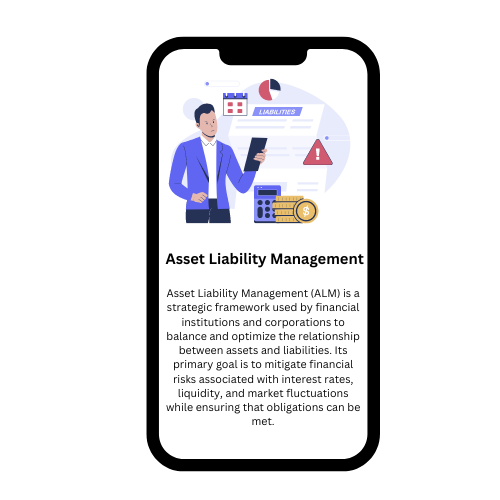Subordinate debt refers to loans or debt instruments that rank below other debts in terms of claims on a company’s assets or earnings. In the event of liquidation or bankruptcy, holders of subordinate debt are paid only after senior debt holders have been fully satisfied. Due to this lower priority, subordinate debt is considered riskier and usually carries a higher interest rate to compensate investors for the increased risk. It is often used by companies to raise capital while maintaining flexibility, as it does not affect senior debt agreements. Subordinate debt is common in leveraged buyouts, structured finance, and venture funding.
What is Subordinate Debt?
Subordinate debt is a loan or debt security that is ranked below other forms of debt in the event of a company’s liquidation or bankruptcy. It is called “subordinate” because it is subordinated (i.e., placed at a lower priority) to more senior debts. In the capital structure of a company, subordinate debt comes after secured loans and senior unsecured bonds but before equity holders.
Example:
If a company goes bankrupt, the order of repayment is typically:
- Secured creditors (banks with collateral-backed loans)
- Unsecured creditors (senior bonds)
- Subordinate debt holders
- Shareholders (common and preferred)
Characteristics of Subordinate Debt
- Lower Priority: Subordinate debt holders are only repaid after all senior debt obligations are met.
- Higher Interest Rates: Due to its higher risk, subordinate debt typically offers higher interest rates to attract investors.
- No Collateral: It is usually unsecured, meaning it does not have specific assets backing it as collateral.
- Flexible Terms: Often negotiated with specific terms, subordinate debt can be customized to suit the needs of the lender and borrower.
Types of Subordinate Debt
There are different types of subordinate debt instruments that companies might use, such as:
- Subordinated Bonds: These are bonds issued by companies where the bondholders have a junior claim on the company’s assets compared to senior bonds.
- Mezzanine Financing: A hybrid of debt and equity financing where lenders can convert their debt into equity if the company defaults. Mezzanine debt often includes subordinate debt components.
- Convertible Subordinated Debt: Debt that can be converted into equity shares of the company, often at the discretion of the bondholder. This type of debt is used to provide downside protection while still allowing potential upside if the company performs well.
Uses of Subordinate Debt
Subordinate debt is a flexible financing tool used by companies in various situations:
- Capital Structure Optimization: Companies use subordinate debt to raise capital without increasing the risk to senior debt holders or diluting shareholders’ equity.
- Leveraged Buyouts (LBOs): In LBO transactions, subordinate debt is often used to finance acquisitions. It provides additional capital while preserving senior debt capacity.
- Venture Capital: Startups and fast-growing companies may use subordinated loans to access growth capital while keeping senior debt available for future needs.
- Project Financing: Subordinated debt can provide supplementary funding for large projects where equity financing is limited.
Risk and Return Profile
Subordinate debt carries a higher risk than senior debt because it is lower in the repayment hierarchy. However, to compensate for this risk, companies typically offer:
- Higher Interest Rates: Subordinate debt can have interest rates significantly higher than those for senior secured debt.
- Equity Upside Potential: In some cases (like convertible subordinate debt or mezzanine debt), lenders can convert their debt into equity, benefiting from the company’s success.
Advantages of Subordinate Debt
- Preserves Ownership: Companies can raise capital without diluting existing shareholders.
- Flexibility: Subordinate debt can be structured to meet specific business needs, such as deferred interest payments or equity conversion options.
- Enhances Capital Structure: It allows companies to leverage existing assets while keeping senior debt capacity available for other needs.
Disadvantages of Subordinate Debt
- Higher Cost of Capital: The higher interest rates make subordinate debt more expensive than senior debt.
- Increased Risk: In the event of financial distress, subordinate debt holders face a significant risk of losing their investment since they are repaid only after senior debt holders.
- Potential Restrictions: Subordinate debt may come with covenants that restrict the company’s operations or financial flexibility.
Example of Subordinate Debt in Action
Case: A company wants to acquire another business but already has substantial senior debt in place. To avoid breaching its existing debt covenants or losing control of its equity, the company raises capital through subordinated debt.
- Scenario: If the acquisition goes as planned, the company benefits from additional cash flow, making it easier to repay the subordinate debt with its higher interest rates.
- Risk: If the acquisition fails, subordinate debt holders may lose their investments, as they will only be repaid after all senior debt obligations are met.
Subordinate Debt vs. Senior Debt
Feature | Senior Debt | Subordinate Debt |
Repayment Priority | First priority in liquidation | Paid after senior debt |
Interest Rates | Lower | Higher |
Collateral | Usually secured | Usually unsecured |
Risk | Lower risk | Higher risk |
Cost of Capital | Cheaper | More expensive |
Conversion to Equity | Typically not convertible | Can be convertible (mezzanine debt) |
Subordinate Debt in India
In India, the use of subordinate debt is regulated by various authorities like the Reserve Bank of India (RBI) and the Securities and Exchange Board of India (SEBI). It’s a common tool for financing in sectors like infrastructure, real estate, and venture capital.
MSME Subordinate Debt Scheme: The Indian government launched the scheme to provide stressed Micro, Small, and Medium Enterprises (MSMEs) with access to subordinate debt, allowing promoters to infuse capital and improve their balance sheets.
Conclusion
Subordinate debt plays a vital role in a company’s capital structure, offering a flexible financing option while preserving senior debt capacity and shareholder equity. Although it carries higher risk, its potential for higher returns makes it attractive to investors looking for increased yield. Companies use subordinate debt strategically for growth, acquisitions, or restructuring, balancing risk and reward in their financial strategies.






